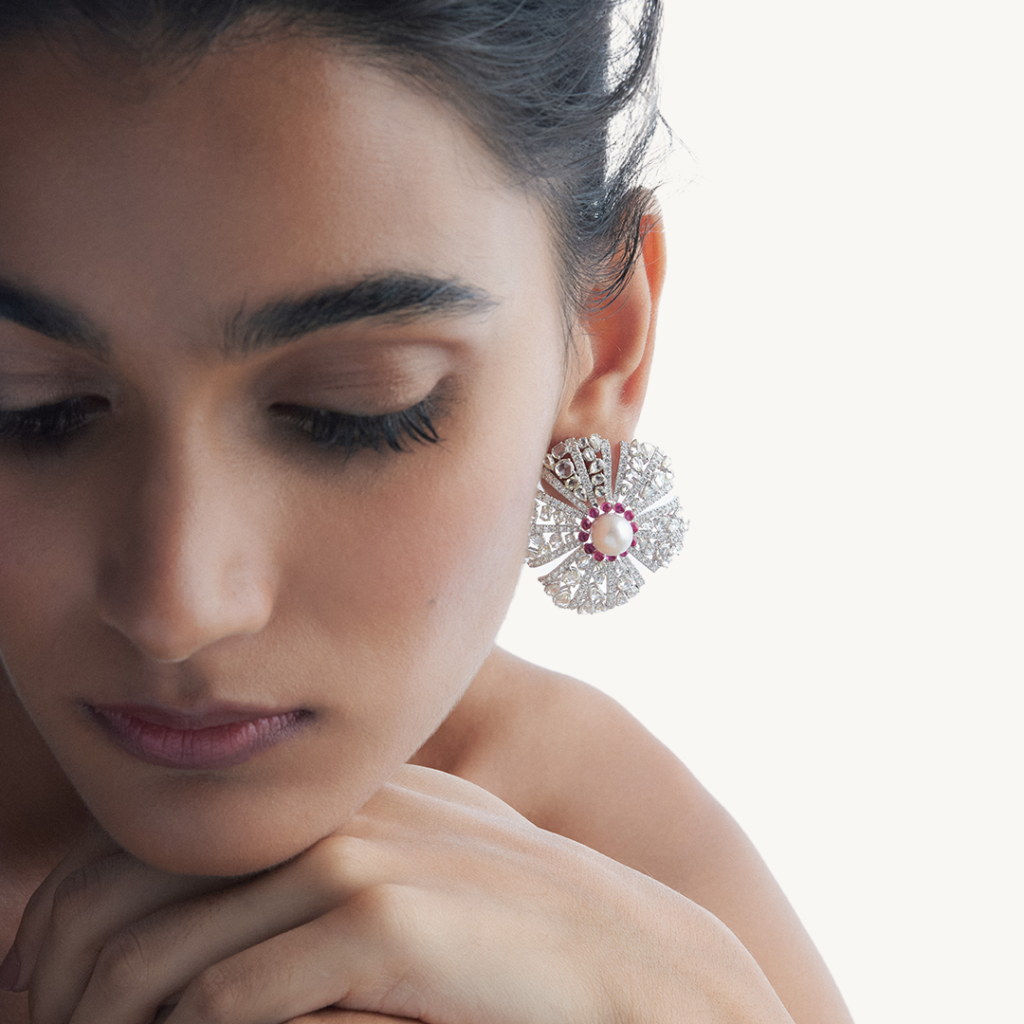How The Paisley Motif Travelled Far Beyond Traditional Indian Jewellery
The landscape of India and its cultural diversity provides the backdrop for an enduring fascination with the paisley motif among diamond jewellers.

Rarely do motifs cross cultural boundaries as freely and successfully as the Paisley – a tear-drop shaped repeating swirl that’s as ubiquitous in western dress as it is in Indian fine jewellery. The story begins many centuries ago, possibly in Persia (contemporary Iraq and Iran), where the Paisley silhouette is thought to have originated. Within India, the Paisley pattern commanded its own attention and laid its own foundations among artisans. Today it is adapted, reinvented, and exported as a feature of India’s culture and enduring feature of its unique decorative aesthetic.
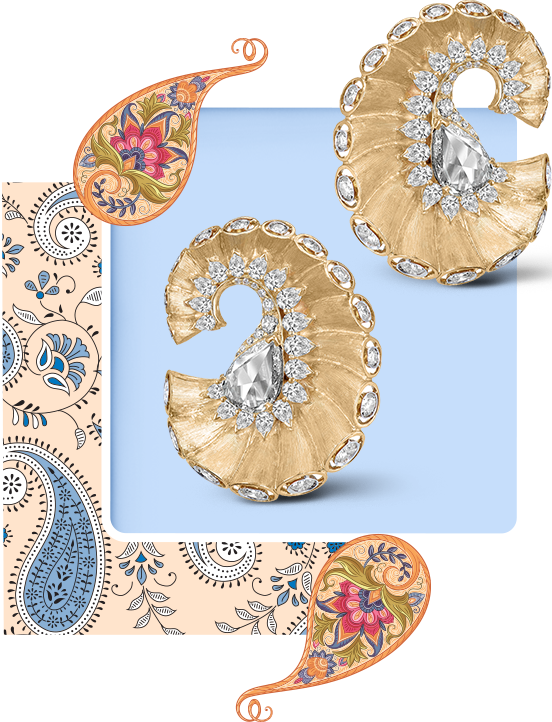
Paisley is just one name that’s used to describe this recognisable curved-droplet shape. Within India, you may hear it being called Ambi, meaning ‘mango’ in Punjab or Kairi, which translates to ‘mango seed’. One is likely to have found Paisley pattern clad fabrics on the Silk Road, and its significance spread throughout Central Asia in the mid 16th and early 17th centuries. As the East India Company navigated the Indian Ocean and established trade between India and Europe, the tear-drop pattern was slowly introduced to new audiences. In the 19th century, the motif had become so popular in Great Britain that it was produced domestically on shawls, fabrics, waistcoats, and other items. In this regard, the motif took on a life of its own in faraway lands, tempting Queen Victoria and Oscar Wilde, fueling the creativity of William Morris and inspiring the Arts and Crafts, and Art Nouveau movements, all while evoking the Indian culture that had brought the motif to prominence.
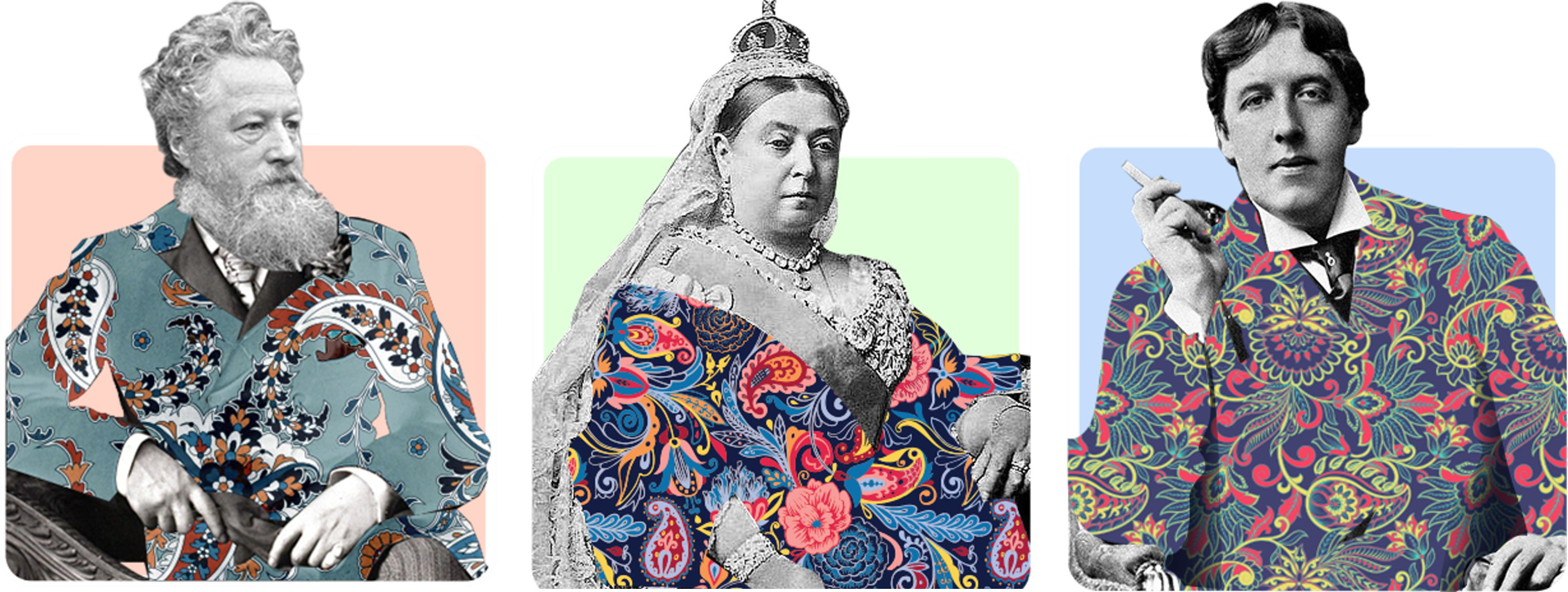
The symbolic significance of Paisley is an equally fascinating story, and the exact root of its characteristic shape isn’t known for certain (although mango seeds, cashew nuts, pine cones, flames and flowers are all probable). Historically, there’s a connection between the Paisley tear-drop shape and the concepts of strength, life and eternity. This nuance was somewhat lost in the Western world in the 1960s when the Paisley pattern was adopted as a colourful symbol of rebellion and psychedelia, worn by music stars like The Beatles and The Rolling Stones, and adapted extensively by fashion houses of the day.
In India, however, the Paisley has long maintained its traditional and authentic significance among artisans, whether across printed fabrics or, in more recent decades, diamond jewellery. This is a motif that serves as a canvas for designers, whether they’re using polki diamonds, intricate filigree gold work or creating chains of Paisley motifs, linked together, and worn around the neck. Paisley flourishes can be found across entire suites of jewellery, from brooches and pendants to tie-pins and bridal jewels. And Paisley is not strictly a feminine motif; the Indian kalgi – a turban decoration worn by grooms on their wedding day – takes the form of an elongated Paisley and can later be worn as a lapel pin on formal occasions.
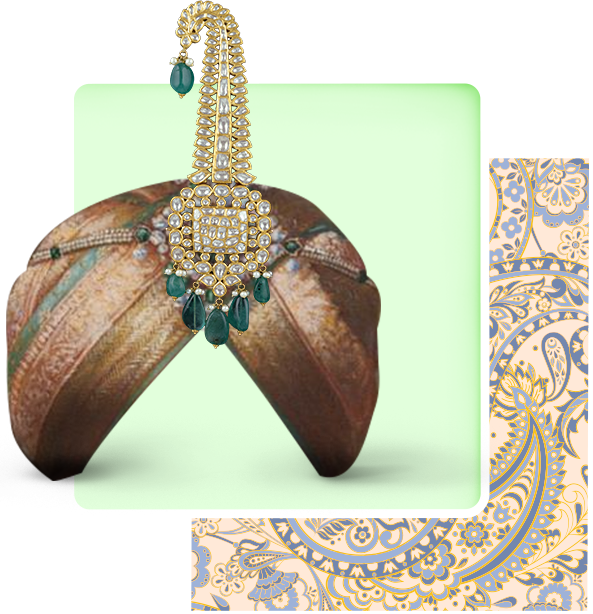
Paisley as a decorative motif has travelled beyond India too and has developed international appeal among diamond jewellers. Over the last 20 years, its fluid, organic shape has inspired many a designer from Europe, the USA and even a number of Haute Joaillerie Maisons on the famous Place Vendôme, to create not only one-of-a-kind pieces, but whole collections inspired by the ‘mango seed’.
The most illustrious example would be the Medhi set, consisting of a diamond necklace, brooch, various types of earrings and rings, from the Bleu de Jodhpur Collection by Boucheron, launched in 2015. This sophisticated ode to the beauty of Paisley was just one facet of a 105-piece high jewellery offer, collaboratively created between Boucheron’s creative director, Claire Choisne, and the Maharaja of Jodhpur. Another jewelled interpretation comes courtesy of the British family-run company, Boodles. Back in 2012, the brand launched its Wonderland Collection that embraces numerous global influences, including the allure of Indian culture, in white gold, yellow gold and diamonds.
In 2019, Van Cleef & Arpels turned to the Paisley motif to bring to life its transformable Paisley Précieux necklace with a detachable pendant, part of its Treasure of Rubies High Jewellery Collection. Although the collection is dedicated to red corundum, it is impossible to draw your eyes from a central pear-shaped D-IF Type IIA diamond of 3.18 carats that embellishes the Paisley motif necklace; a perfect example of a Paisley and diamonds working in harmony.
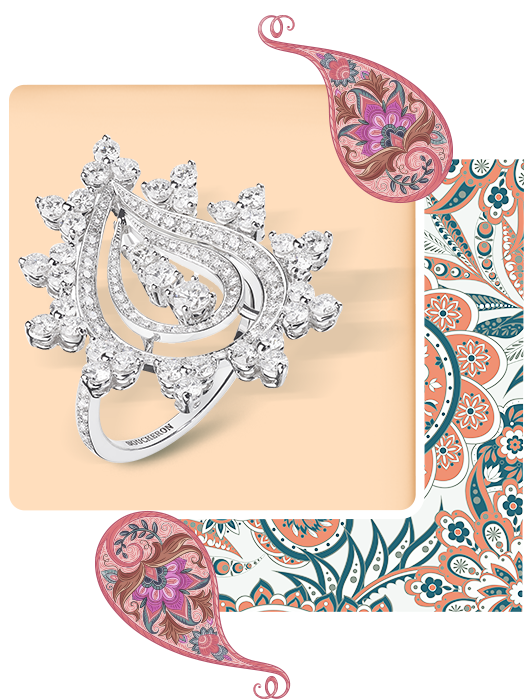
The ornate paisley motif on a natural diamond ring. Jewellery: Boucheron – Bleu de Jodhpur 2015
Continuing our explorations, David Webb should get an honourable mention for an intriguingly architectural cross over bracelet, complete with two diamond-studded Paisley motifs that adorn each end. And Chopard, always a favourite for high jewellery watches, presented the Paisley motif in bold pops of pink via a fancy-coloured diamond cocktail watch. The Paisley pattern shaped dial is the ideal way to mark the passing seconds in style.
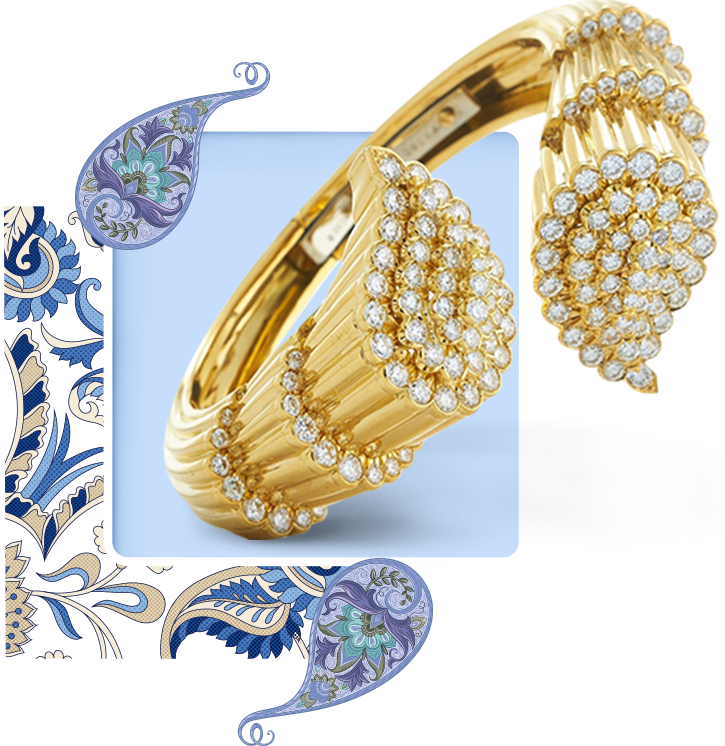
No matter how it is adapted, reshaped, stretched, or decorated, the Paisley pattern is steeped in history. Its path forked in Western and Indian cultures, reflecting both the rebellious new and the comfort of tradition, and yet its massive global appeal continues, meaning something different to all those who reinvent it. For today’s most successful and inventive diamond jewellers in India and globally, the Paisley motif is not only a link to the past, but an opportunity to demonstrate a unique aesthetic. After all, what could be more demonstrative of a truly signature style than a Paisley motif that delivers something new and never seen before? For those wishing to create a diamond jewellery legacy, this is an exciting place to start.
